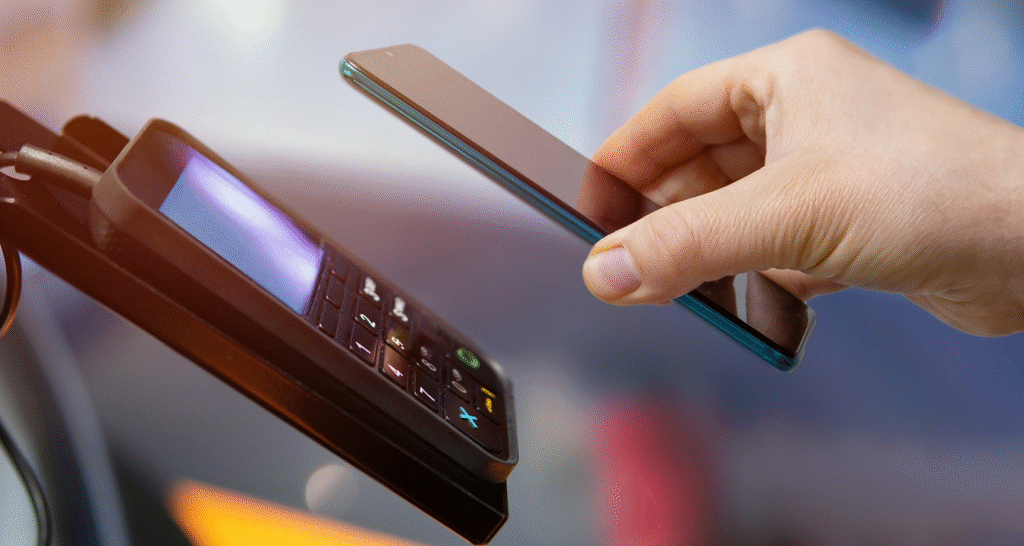Psychology of contactless card payments: what is it and how does it work?
Understand the psychology of contactless payments: discover how they work, why they seem so easy, and their impact on consumer behavior.
Understand the psychology of contactless card payments

Contactless card payments are no longer a novelty, they have become part of everyday life for millions of people around the world. From grabbing a quick coffee to paying for groceries, the simple act of tapping a card has reshaped not only consumer behavior but also the way we perceive money.
Behind this convenience lies an interesting psychological dimension that explains why contactless payments feel so natural, fast, and even a little addictive.
In this article, we’ll explore what the psychology of contactless payments is, how it works, and what it means for both consumers and businesses.
What Is the Psychology of Contactless Payments?
The psychology of contactless card payments refers to the study of how this payment method influences human behavior, emotions, and decision-making.
Unlike cash or even traditional chip-and-PIN transactions, contactless payments remove several “pain points” from the act of spending money.
By reducing friction in the process, these payments change the way we interact with money. Instead of counting bills or entering a PIN, a simple tap creates a fast, almost seamless experience.
Psychologists call this phenomenon the “reduced pain of paying”, the idea that when a purchase feels effortless, we are more likely to spend without hesitation.
How Do Contactless Payments Work?
On a technical level, contactless payments use NFC (Near Field Communication) technology. This allows two devices, the card and the payment terminal, to communicate securely when they are close together.
Here’s what happens in a matter of seconds:
- The customer places the card near the terminal;
- The card’s embedded chip sends encrypted payment data to the terminal;
- The payment is authenticated by the bank;
- The transaction is approved, often without the need for a PIN for smaller amounts.
From the consumer’s perspective, it feels like magic. From a psychological standpoint, the speed and simplicity significantly affect our perception of money.
Why Do Contactless Payments Feel So Different?
The main reason lies in the emotional distance from money. When paying with cash, we physically see money leaving our wallet, which creates a stronger emotional impact.
With contactless, the transaction is almost invisible. This reduced visibility makes the payment feel less significant, even though the financial impact is the same.
Another factor is time. Traditional transactions involve small delays, waiting for change, inserting a card, or typing a PIN.
These steps give the brain time to process the purchase. Contactless payments remove these delays, leaving little room for second thoughts.
Psychological Benefits for Consumers
Despite the risk of overspending, contactless payments also bring clear psychological advantages:
- Convenience: The faster the process, the less stress consumers feel when paying;
- Safety: In crowded or busy places, not handling cash feels more secure;
- Control through limits: Most banks and payment systems impose limits for contactless transactions without PIN entry, offering peace of mind;
- Positive reinforcement: The efficiency and ease create a sense of satisfaction, encouraging repeated use.
These benefits explain why many people quickly develop a preference for “tap and go” instead of other methods.
The Business Perspective
For businesses, the psychology of contactless payments is just as powerful. Shorter transaction times mean faster lines, happier customers, and more sales opportunities.
Moreover, customers who feel less friction when paying are often willing to spend more.
Retailers, cafés, and transport services benefit greatly from this payment method because it removes barriers between the customer’s decision to buy and the actual purchase.
In other words, the shorter the gap between desire and action, the higher the chance of a successful sale.
Are There Risks?
Yes, and psychology helps explain them. The very convenience that makes contactless appealing can also encourage impulse buying. When the “pain of paying” is reduced, consumers may underestimate how much they are actually spending.
Another psychological risk is the illusion of safety. Because transactions feel simple and controlled, some people may neglect to monitor their expenses regularly. That’s why budgeting apps and notifications are important tools to maintain awareness.
Conclusion
The psychology of contactless payments goes beyond technology. It reveals how something as simple as tapping a card can influence emotions, decisions, and spending habits.
By reducing the pain of paying, contactless payments have changed the way we interact with money, making transactions faster, smoother, and in many cases, more frequent.
For consumers, understanding this psychology is essential to maintaining financial control. For businesses, it’s a valuable tool to create better customer experiences.
In the end, contactless payments are not just about technology, they are about how humans think, feel, and behave in the modern financial world.





